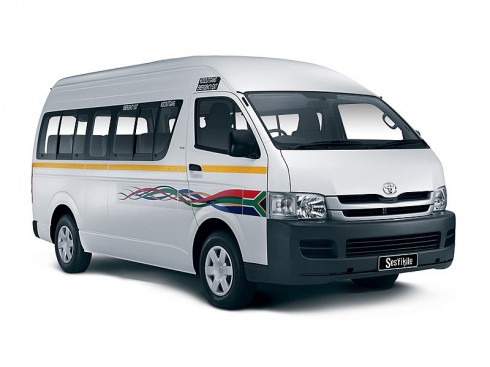Business
South Africa’s dishevelled taxis move millions and the economy

Zakes Hadebe’s minibus taxi has nearly half a million kilometers on the clock, a broken speedometer and a fuel gauge he struggles to keep just above empty. Yet by 8 a.m. on a recent Friday, Hadebe and his rattling Toyota had already overcome rain, traffic and an ever-rising petrol price to ferry nearly 40 commuters from South Africa’s black township of Soweto to nearby Johannesburg.
South Africa’s minibus taxi industry, scorned by other motorists for reckless driving and dogged by a reputation for violence, moves 15 million people every day, most of them lower income blacks. More like buses than the taxis of New York or London, the rumbling 16-seaters are the wheels of Africa’s largest economy.
With an annual revenue estimated at $3.7 billion, the industry is also drawing attention from local finance firms and global automakers. Nissan this month started selling taxis in South Africa after an 18-year hiatus, looking to challenge Toyota’s dominance.
“If the taxi industry were to stop completely, there’s no cleaner at your house, there’s no coffee at work, there’s no workers on the work floor,” said Nkululeko Buthelezi, chief executive of the South African National Taxi Council industry body.
The industry sprang up during white-minority rule, when blacks had to live in townships miles away from the cities where they worked and where bus service was spotty. Since the end of apartheid in 1994, taxis have grown into arguably South Africa’s largest black-owned sector, with around 250,000 vehicles and directly employing 600,000.
While the average owner has 2-1/2 vehicles and employs drivers, some, like Hadebe, do the driving themselves. “The petrol is the biggest problem,” said the 33-year-old, whose daily revenue is at the bottom end of the industry average of 1,000 to 2,500 rand ($93-$230), and that’s before paying for fuel. “You have to make use of each and every cent that you get.”
HAND SIGNALS
The sound and spectacle of the often battered and barely roadworthy taxis are impossible to miss; drivers persistently bleat their horns to attract passengers, who use an elaborate system of hand signals to indicate destinations. A single finger pointing up will flag a taxi headed into central Johannesburg, while four fingers indicate the suburb of Fourways. The city of Johannesburg has even published a guide to hand signals.

